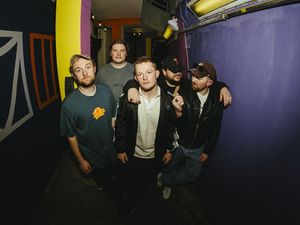Travel Review: Going off-map in Saudi Arabia
Sweeping the billowing sleeves of her abaya skyward, the astronomer guides our attention to a glittering light show overhead.

Lying on embroidered cushions and Persian carpets strewn across the desert floor, we gaze at al-jady, the ‘goat kid’, and al-farqadan, the ‘two wild cow calves’, part of an ancient compass used by camel caravans to navigate Saudi Arabia’s ever-shifting sands.
Around us, gnarled sandstone pinnacles loom from the darkness, fragments of former mountains ravaged by climate and time.
“This was our ancestors’ ceiling,” explains Badria, the smart, eloquent guide leading our after-dark Bedouin tour in Al Gharameel. “Almost 40% of the stars have Arabic names,” she proudly points out. “We have always used them in storytelling and to find our way.”

Of course, in modern times, cartographers no longer rely on constellations. But to the outside world, so much of Arabia’s secretive desert Kingdom remains off the map.
Intrepid British explorer Wilfred Thesiger famously chronicled his journey across the region in his 1959 travelogue Arabian Sands. “No man can live this life and emerge unchanged,” he wrote. “For this cruel land can cast a spell which no temperate clime can match.”
His words invited intrigue, but only recently have travellers been able to sample the destination for themselves. In September 2019, a tourist visa programme was launched, and investment in infrastructure has been ramping up ever since.
In some ways, the move feels like an intentional step closer to the west, a shift reflected by the Crown Prince’s increasingly cosmopolitan investment portfolio: in 2017, he purchased Da Vinci’s Salvator Mundi for $450 million, making it the most expensive painting in the world; while the takeover of Newcastle United in November last year marked a first foray into the English Premier League.

Along with a desire to showcase their own national treasures, there’s also an economic incentive to opening up. As global prices for oil continue to fall, the Saudis are acutely aware their black gold is losing its lustre. Part of Saudi Vision 2030, a masterplan to reshape the economy, tourism presents a vital new source of revenue.
Although developments are happening across the country, the biggest hopes are pinned on AlUla, one of the oldest cities in the Arabian Peninsula, located in the north west of the Kingdom.
Blessed with fertile soils and an oasis of natural springs, the traditional date-growing region and commercial centre was a key stop along ancient intercontinental incense and spice-trading routes, linking India and Arabia with the Mediterranean and the Levant.
The star attraction is Hegra, a collection of around 100 grandiose burial tombs carved into rocky outcrops rising from the desert. Declared a Unesco World Heritage Site in 2008, it’s one of the best examples of Nabataean culture, drawing comparisons with Jordan’s historical gem, Petra.
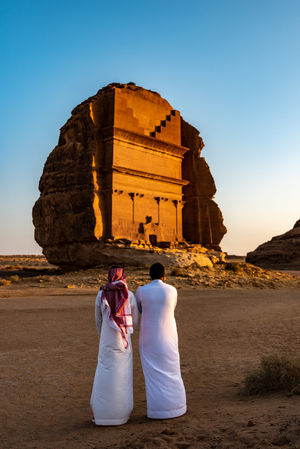
Travelling in a vintage 4×4, we drive through the sprawling, dusty site, admiring towering facades decorated with reliefs of eagles, snakes and stairways to heaven. Encasing the portals, a honeycomb lattice of rock appears to have been melted by the sun like a giant waxy candle.
Most tombs belonged to women – indicating females enjoyed an elevated status in Nabataean society – a point poignantly stressed by our local guides.
Other archaeological sites of interest in AlUla include the ruins of Dadan, dating back roughly to the first millennium BC, and Jabal Ikmah, an open-air library of ledgers and notes etched into the rocks. Described by our guide as “the original Twitter”, it was a resting place for weary travellers seeking shade and the refreshment of a waterfall that once flowed, a forum for discussion and platform to broadcast thoughts.
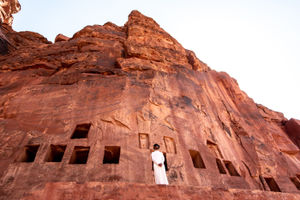
Less than 4% of the area has been excavated, making it a living, breathing Indiana Jones adventure for archaeologists like Jerome Rohmer, who have been invited to conduct major digs.
“I’ve worked in Syria and Jordan before, but this is completely fresh. Every time we find something, we see science moving forward.”
Jerome is one of several European talents employed in Saudi’s 2030 mission, joining names like A-list chef Jason Atherton, who has opened Maraya Social in the Ashar Valley, 21km from Hegra.
“I’ve been coming to the Middle East for 20 years and I didn’t know natural beauty like this existed in this area,” he says, when we meet at the restaurant which occupies the rooftop of the world’s largest mirrored building, reflecting a dramatic landscape of glowing red canyons.
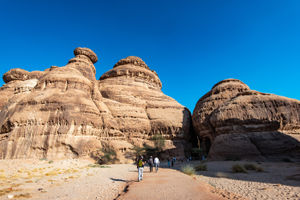
The glass conference hall is close to several of AlUla’s new luxury hotels. Banyan Tree, Aman and Abercrombie & Kent all have projects in the pipeline, while experiential hotel group Habitas have already opened their 96-room property, spread across standalone villas.
After dark, the fashionable property’s pool is lit up, while music pumps from speakers and canapes and cocktails are served on glitzy platters, making it feel more like a trendy St Tropez enclave than a hotel in a country governed by Islamic law. The missing ingredient is alcohol, although hoteliers are confident rules will be relaxed for foreign visitors in resorts.
Change is, indeed, happening at a pace. By the end of 2023, Philip Jones, chief destination marketing officer for the Royal Commission for AlUla, estimates there will be 1,000 hotel rooms available – although any development will be carefully controlled.
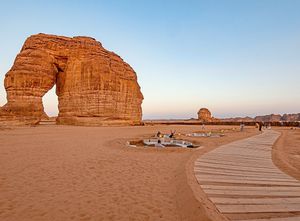
Another particularly controversial topic is the treatment of women. Mashail Makki, one of Saudi Arabia’s first female guides, shares her thoughts with me on a tour of the AlUla Old Town. “They say we don’t have freedoms,” she complains. “But nobody ever asks us, so how would they know?”
Saudi is ready to share her secrets, and if the stars are aligning, it’s very tempting to join the caravan.

